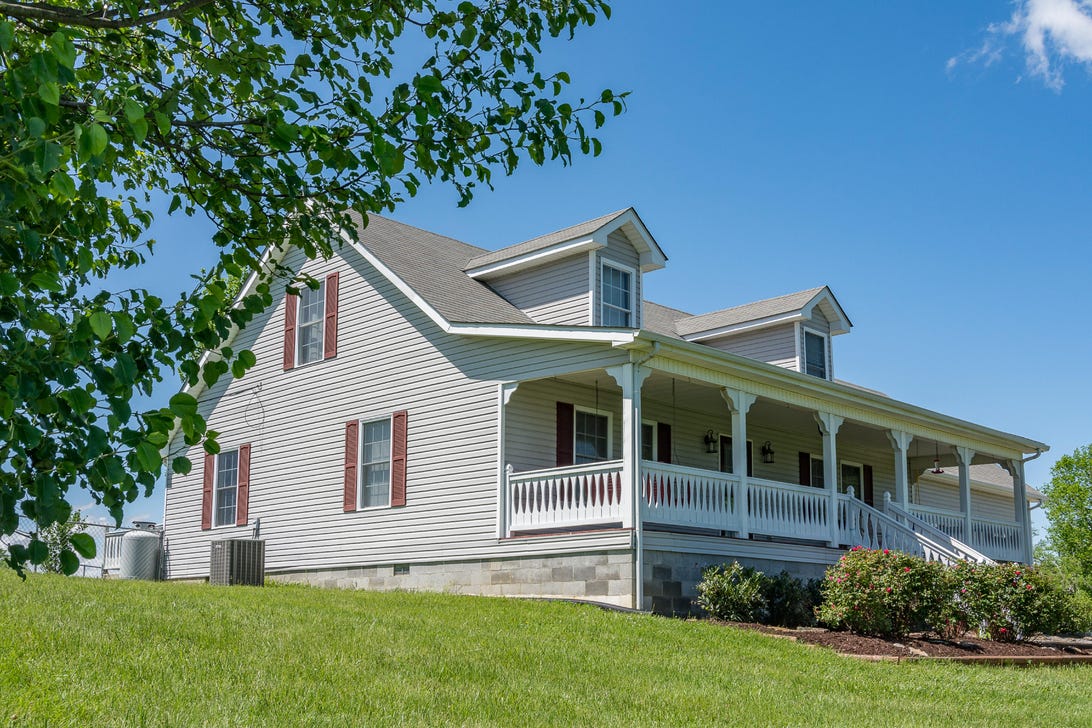
A number of benchmark mortgage refinance rates moved up today. Both 15-year fixed and 30-year fixed refinances saw their mean rates go up. At the same time, average rates for 10-year fixed refinances had a slight fall.
Homeowners can expect to see refinance rates rise over the course of this year. Although rates are higher now than at the start of the pandemic, multiple economic factors are likely to keep pushing rates up. Refinance rates also fluctuate daily, but if you’re looking to shave dollars and interest off of your current monthly mortgage payments, these could be the lowest rates this year. Make sure to think about your goals and circumstances, and compare offers to find a lender who can meet your needs.
30-year fixed-rate refinance
The current average interest rate for a 30-year refinance is 4.89%, an increase of 37 basis points from what we saw one week ago. (A basis point is equivalent to 0.01%.) One reason to refinance to a 30-year fixed loan from a shorter loan term is to lower your monthly payment. This makes 30-year refinances good for people who are having difficulties making their monthly payments or simply want a bit more breathing room. However, interest rates for a 30-year refinance will typically be higher than rates for a 15-year or 10-year refinance. It’ll also take you longer to pay off your loan.
15-year fixed-rate refinance
The current average interest rate for 15-year refinances is 4.10%, an increase of 24 basis points compared to one week ago. A 15-year fixed refinance will most likely raise your monthly payment compared to a 30-year loan. However, you’ll also be able to pay off your loan quicker, saving you money over the life of the loan. Interest rates for a 15-year refinance also tend to be lower than that of a 30-year refinance, so you’ll save even more in the long run.
10-year fixed-rate refinance
The current average interest rate for a 10-year refinance is 4.00%, a decrease of 1 basis points compared to one week ago. You’ll pay more every month with a ten-year fixed refinance compared to a 30-year or 15-year refinance — but you’ll also have a lower interest rate. A 10-year refinance can help you pay off your house much quicker and save on interest. Just be sure to carefully consider your budget and current financial situation to make sure that you can afford a higher monthly payment.
Where rates are headed
Interest rates are expected to go up this year, as the Federal Reserve recently raised rates for the first time since 2018 and plans to increase them multiple times in 2022. During the pandemic, refinance rates dropped to historic lows, but given factors like Federal Reserve policy, strong economic growth and inflation – which reached its highest in four decades – we’re now seeing interest rates closer to pre-pandemic levels. While the war in Ukraine has caused temporary dips in interest rates, it’s impossible to predict when another drop might occur. That means it’s a good idea to try to take advantage of refinancing now and lock in a decent rate.
We track refinance rate trends using data collected by Bankrate, which is owned by CNET’s parent company. Here’s a table with the average refinance rates supplied by lenders across the US:
Average refinance interest rates
| Product | Rate | A week ago | Change |
|---|---|---|---|
| 30-year fixed refi | 4.89% | 4.52% | +0.37 |
| 15-year fixed refi | 4.10% | 3.86% | +0.24 |
| 10-year fixed refi | 4.00% | 4.01% | -0.01 |
Rates as of Apr. 4, 2022.
How to find the best refinance rate
When looking for refinance rates, know that your specific rate may differ from those advertised online. Your interest rate will be influenced by market conditions as well as your credit history and application.
Generally, you’ll want a high credit score, low credit utilization ratio, and a history of making consistent and on-time payments in order to get the best interest rates. Researching interest rates online is always a good idea, but you’ll need to connect with a mortgage professional to get your exact refinance rate. You should also take into account any fees and closing costs that might offset the potential savings of a refinance.
It’s also worth noting that in recent months, lenders have been stricter with their requirements. This means that if you don’t have great credit ratings, you might not be able to take advantage of lowered interest rates — or qualify for a refinance in the first place.
To get the best refinance rates, you’ll first want to make your application as strong as possible. You can do that by monitoring your credit, taking on debt responsibly, and getting your finances in order before applying for a refinance. Don’t forget to speak with multiple lenders and shop around to find the best rate.
When should I refinance?
Most people refinance because the market interest rates are lower than their current rates or because they want to change their loan term. While interest rates have been low in the past few months, you should look at more than just the market interest rates when deciding if a refinance is right for you.
To decide whether a refinance is right for you, consider all of the factors including how long you plan to stay in your current home, the length of your loan term and the amount of your monthly payment. And don’t forget about fees and closing costs, which can add up.
Some lenders have tightened their requirements in recent months, so you may not be able to get a refinance at the posted interest rates — or even a refinance at all — if you don’t meet their standards. Refinancing at a lower interest rate can save you money in the long run and help you pay off your loan sooner. But a careful cost-benefit analysis is necessary to confirm that doing so makes sense.

